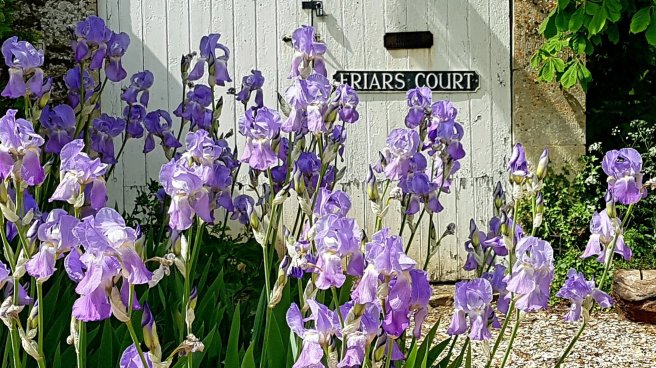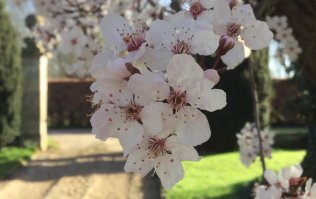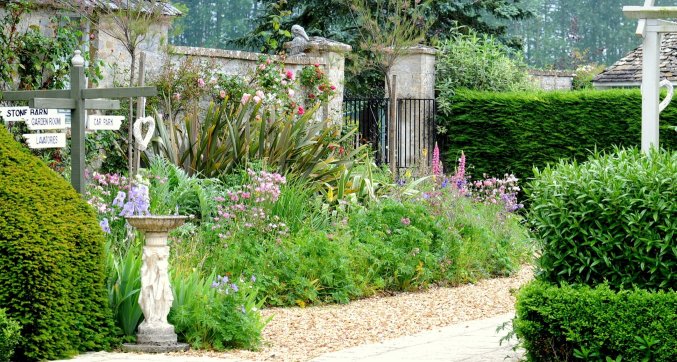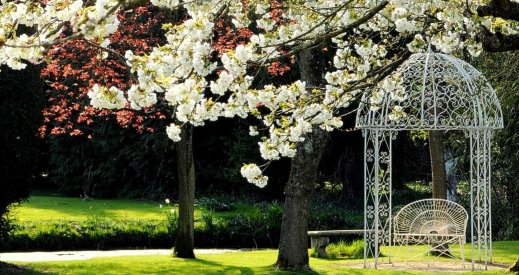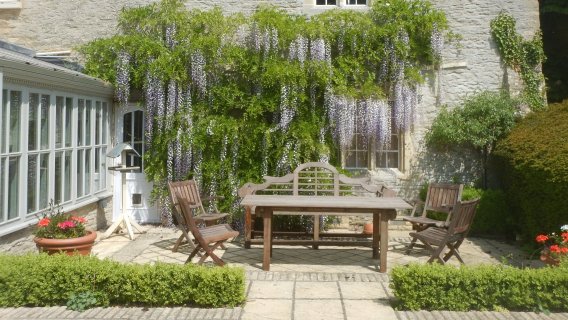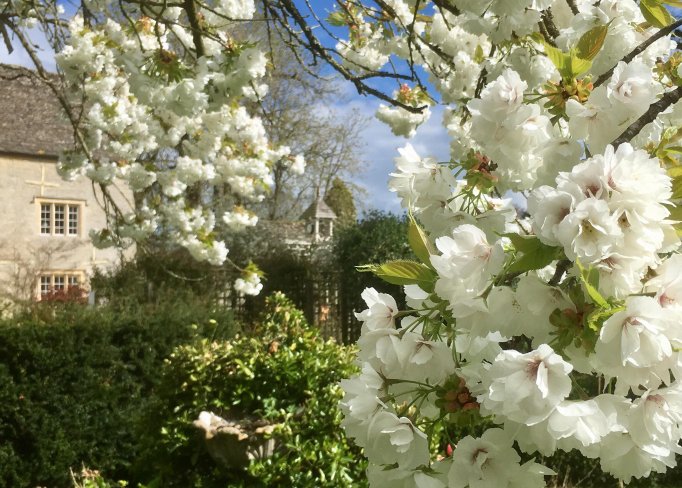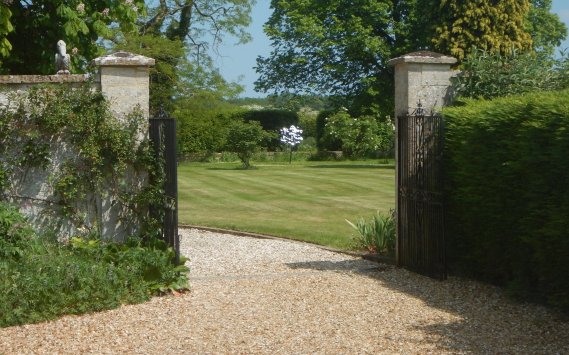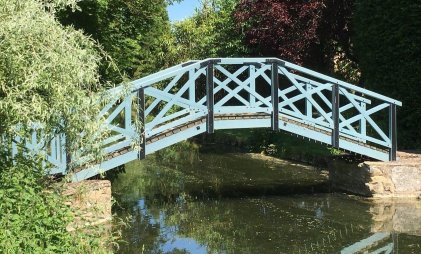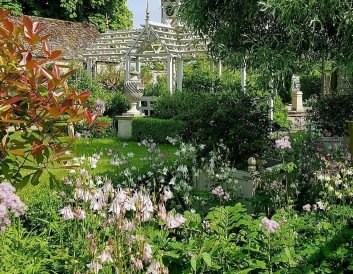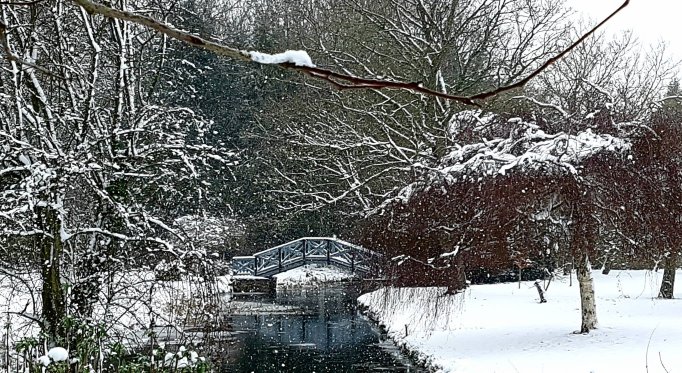
Gardens
Friars Court is an unusual house in the fact it is a moated property. The moat is thought to be at least 500 years old and the remaining arms encompass the house and three acres of gardens. It was not created as a means of defensive but was for keeping livestock out of the grounds, which were originally used for growing vegetables, as well as for breeding silver carp for food.
The gardens within the moat were re-landscaped in the late 1960s by John & Frances Willmer who introduced specimen trees - ornamental cherry, Silver Pear, Liquidambar and a rather splendid Tulip Tree – which complimented existing features such as the monumental yew arch which stands on the banks of the moat. The grounds are now quietly evolving again within this original framework. Rather like ‘garden rooms’, the grounds divide naturally into smaller areas each with a subtly distinct ‘feel’ so, in one part of the grounds the romantically-planted Winterhalter Rose Garden lies opposite the more formal Lion Garden and beside the wilder Courtyard Garden. Adjacent is the Privy Garden with a path laid between raised beds which leads down to a wooden Victorian-styled greenhouse where cuttings and seedlings from the garden are grown.
Beyond the expanse of lawn to the front of the house are the former restored water-lily-filled mediaeval carp ponds edged with native wild marginal plants and a fifty-foot living willow tunnel. The ponds were filled in about 1850, although a restoration project in 2000 returned them to their original position.
Away from the gardens is a short woodland walk, reached by crossing the arched Moat Bridge by the Yew arch, winding through sunlit glades past a 200 year old cobbled Sheepwash and down into ‘Horsefield Copse’, planted in 1980.
For gentle walking a level path leads from the Back Garden, down the South Walk and round to the Moat Ponds - an ideal route for wheelchair users.
From the Moats Ponds it is possible to see two of the three solar arrays (the third is mounted on the roof of a large cow yard) which in total generate nearly 45 kilowatts of power which contributes towards the electrical requirements of the house and farm.
The gardens can be visited by arrangement for a private tour and there are also public open days. Click on the links for more information.

